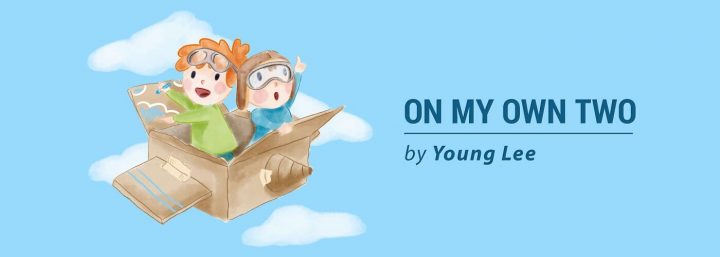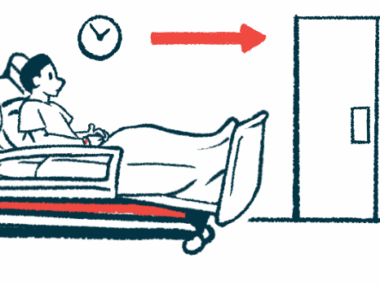I’m Trying to Make Exercise Irresistible
Written by |

Column by Young Lee
A couple weeks ago when I spoke with Steve O’Donnell, a board member of the Charcot-Marie-Tooth Association and founder of the nonprofit Therapies for Inherited Neuropathies, I was struck by his enthusiasm and can-do spirit.
I envy O’Donnell’s boundless energy and ability to intentionally take the stairs, park far away from a destination, or run a few miles every day. He’s managed to make a habit out of his exercise routine. And none of this seems to be a chore.
I know he isn’t alone. I know many athletes with CMT remain active out of dedication and habit. I’m in awe of all of them.
But I don’t think I can say the same about me. I wish I were different. I wish I didn’t find integrating an at-home exercise routine into my daily life so difficult. Doing so is especially important for CMTers because, as O’Donnell said, “if you lose [capacity] to CMT, it’s really hard to get that back.”
This desire of mine to form a habit around an exercise routine reminded me of an interview I heard on the radio a few months ago with Shankar Vedantam, host of the radio program “Hidden Brain,” and Wendy Wood, a professor and author of “Good Habits, Bad Habits: The Science of Making Positive Changes That Stick.”
In that episode of “Hidden Brain,” I first heard about a staircase in Seattle nicknamed the “Irresistible Staircase” because its inviting design coaxes folks into making the healthier choice of taking the stairs.
Apparently, designers accomplished this with a few tricks, including ensuring that the stairs are prominently displayed to visitors when they first enter the building. Visitors see the stairs as the first option, not the elevator, which is still available but hidden behind doors.
Designers also made it a point to reward stair-climbers with views of downtown Seattle and Puget Sound. After a time, because the staircase has become an attraction by itself, tenants and visitors now take the stairs by default, to appreciate the staircase’s design and the views of Seattle.
As noted by Vedantam, these design choices represent a few important lessons to keep in mind when attempting to form good habits: associating the desired habit with rewards, minimizing barriers, and associating the desired habit with cues or triggers.
I’ve implemented these once before, earlier this year before the specter of COVID-19 tainted everything. As a self-admitted couch potato by nature, it took quite a bit of self-training to get myself to my local gym regularly. Eventually, I got into the habit of going at least three times a week.
My local gym is less than a five-minute drive, so excuses were minimal. I rewarded myself for going to the gym by telling myself that I could only watch YouTube or Twitch while warming up on a stationary bike or treadmill. I created a routine: I knew that if it was Monday, Tuesday, or Wednesday, I’d get myself to the gym. If it was Thursday, I’d go for badminton.
I was happy with the routine I had set up.
But I couldn’t have predicted how COVID-19 would affect us. Now I feel like I’m back to square one with my fitness routine. While I’m trying to maintain regular walks around my neighborhood, exercises, and stretches based on an exercise video series, I still struggle.
I’m slowly working on building new and better habits. I’m rewarding myself by listening to podcasts while doing my exercises. And I’m trying to maintain a regular routine by doing my exercises late in the evening.
Time will tell if I am successful.
***
Note: Charcot-Marie-Tooth News is strictly a news and information website about the disease. It does not provide medical advice, diagnosis, or treatment. This content is not intended to be a substitute for professional medical advice, diagnosis, or treatment. Always seek the advice of your physician or other qualified health provider with any questions you may have regarding a medical condition. Never disregard professional medical advice or delay in seeking it because of something you have read on this website. The opinions expressed in this column are not those of Charcot-Marie-Tooth News or its parent company, Bionews Services, and are intended to spark discussion about issues pertaining to Charcot-Marie-Tooth.





Barbara A Kimball
I have found that doing walking in a pool and/ or doing exercise dancing like those available through Roku or tablet apps. I don't want to seem like I'm promoting one in particular. I do modifications on some of the low-impact aerobics. I have found that listening to music or podcasts or even audiobooks help distract me from getting too bored while on the recumbent exercise bike, etc. I do like the water aerobics best because it takes the weight off my feet and ankles and I can actually run in water when I can barely walk on land. I have got so unfit during the last two years since I started experiencing my symptoms because I would hurt so badly trying to do what I was used to doing like walking 5 miles on the beach, and martial arts exercises. Now I'm having to reinvent my exercise routine and try to get back into shape. Being a couch potato is very tempting with any neuromuscular disease that causes pain. I'm going to start with PT to work on my balance and gait and hopefully I'll be able to ride my bike safely again in the future. If you want to know the name of the exercise video I have found helpful in making exercise fun, you can directly email me or ask via comment.
Christine Wodke
The important thing is to find an activity you like. Many things count as exercise: gardening, window shopping, dance, ballet, roller skating. Exercise does not have to be done in a gym.
Also working out in a group can help